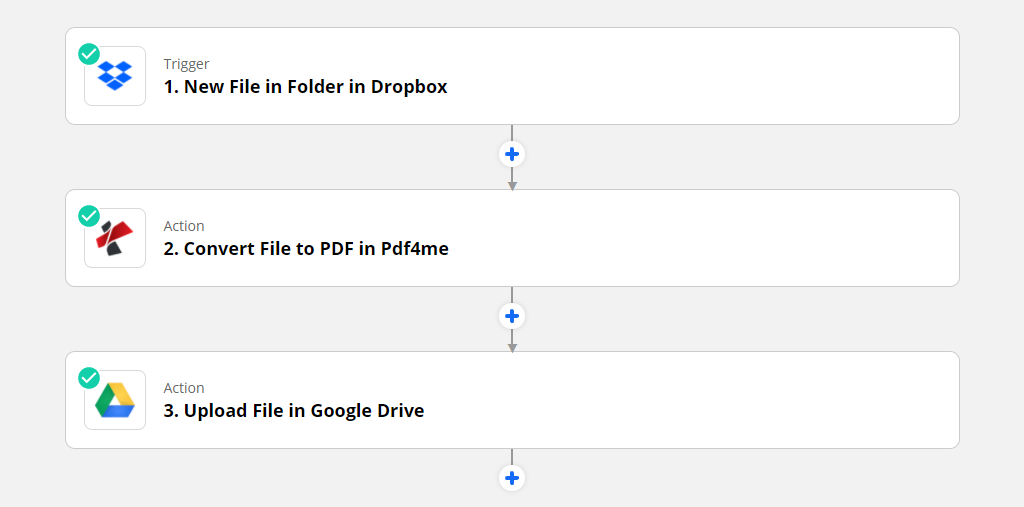
Automate document jobs with PDF4me and Zapier
Business solutions have leaped into an exponentially higher stratum, integrating and networking with compatible platforms and software. Zapier has definitely emerged in its form, as a window, to tie in web entities, creating automation tasks simpler. Riffle through, how PDF4me can be used with other web applications, like Gmail or Dropbox zapping the endless delay in Job executions.
Zapier as a “Go-Between” salvation
Zapier is a web platform, acting as an intermediary to connect web applications. It can operate interlinking with a host of service providers. I must say this be now quite simple and immensely helpful, in creating task-flows and integrating them from various sources. For instance, if you receive an email, with attachments or files from a certain email address, you may want them to be stored in, let us say, Google Drive or Dropbox. ‘Tis invariably a burden, moving these file attachments, directly to these webspace providers. You may probably download it to your local folders, and then take your time, (😊 Good luck to a snappy network!!! 🙁 🙁) and later on, upload it to the destination (here Google Drive or Dropbox).
With this platform, open an email application from Zapier, and in a few clicks, you can upload the files straight into Google Drive or Dropbox. This way, you can integrate the web activities, accessing different applications “stationing” at a single place, 'Zapier’. It is a killer arrival and must say the entire integration when automated, you can save them in the name of a ‘Zap’ for later use, and all to save again a lot of your time and effort. Check our document Automation page to know more.
PDF4me subscribes with Zapier
You must be using PDF4me for many of the document conversions or Job workflows as a simple and less expensive alternative. Interestingly, I could integrate PDF4me with other applications through Zapier and make my job automation placid. I realize the importance of saving time, which is additionally used up, once a pdf is created, mostly to store, send or maybe print. For all my document automation with PDF4me, I perform pdf conversions, merge, compress, Add Watermark, and maybe more, with PDF4me integrated with Zapier. I no longer have a concern about the delay in file management with Google Drive or Dropbox, when I see them alongside PDF4me, in Zapier.

PDF4me in zap as a “Case in point”
How do you create a “Zap”? If you have logged into Zapier, you can see a dashboard of multiple options. you are most likely to notice a prominent button, “Make a Zap”.
Parallelly, you must understand the use case of Zapier automation. As I see it, there are only two activities in the process of Zapier automation. Firstly, A task event that needs to be “triggered”, and secondly the “Action” that follows the trigger. The Trigger defines the event on which the zap should start and Action defines the task to be performed after the event is triggered. Simple enough to initiate an automation workflow!
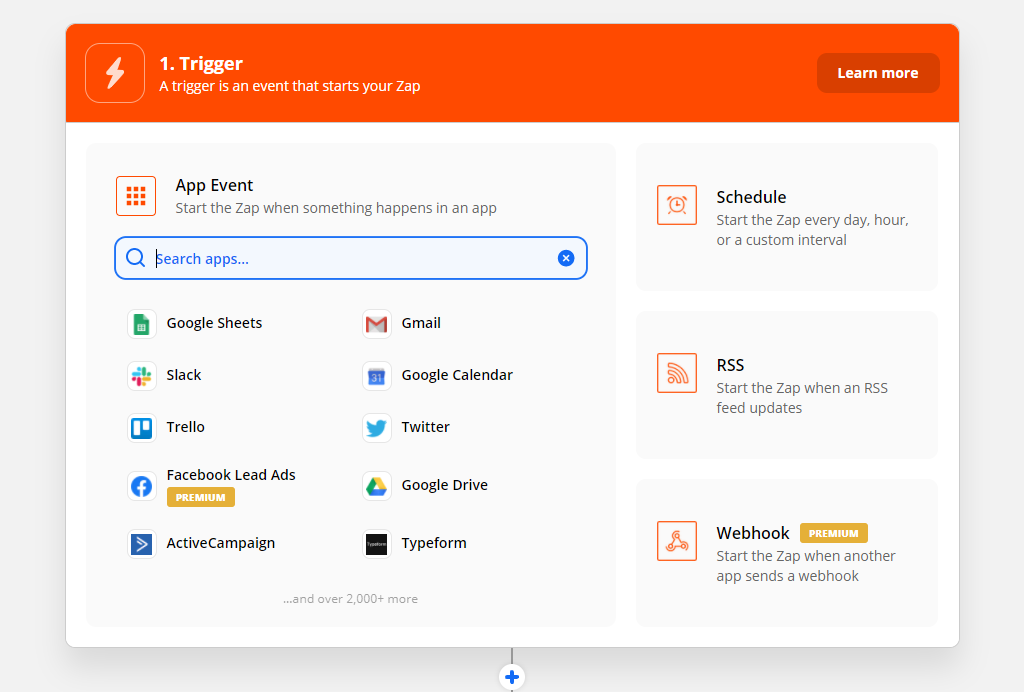
“Zap” with PDF4me!
Let us take a simple scenario, to understand the steps involved while integrating PDF4me, into a “Zap”. I shall take you back to the same old example of an email with attachments. After having uploaded the attachment, let us say, into Dropbox, we plan to convert them to PDF using PDF4me. The so converted pdf, we would intend to save in our Google Drive. Let us understand this scenario, if automated, with PDF4me, Google Drive, and Dropbox in the Zap, as illustrated below step by step.
Step 1- “Trigger in Zap”. Click on the “Make a Zap” button, which would redirect us to a page, which is identified as “zap”. Here, we define a trigger, which in our case is “New File in Folder trigger” in the Dropbox app. We now connect to our Dropbox account where the event shall be triggered. The trigger created is validated for the response. I felt this provision to validate an advantage to ensure the correctness of the response. This response is used as the input for the subsequent “action” in step2.
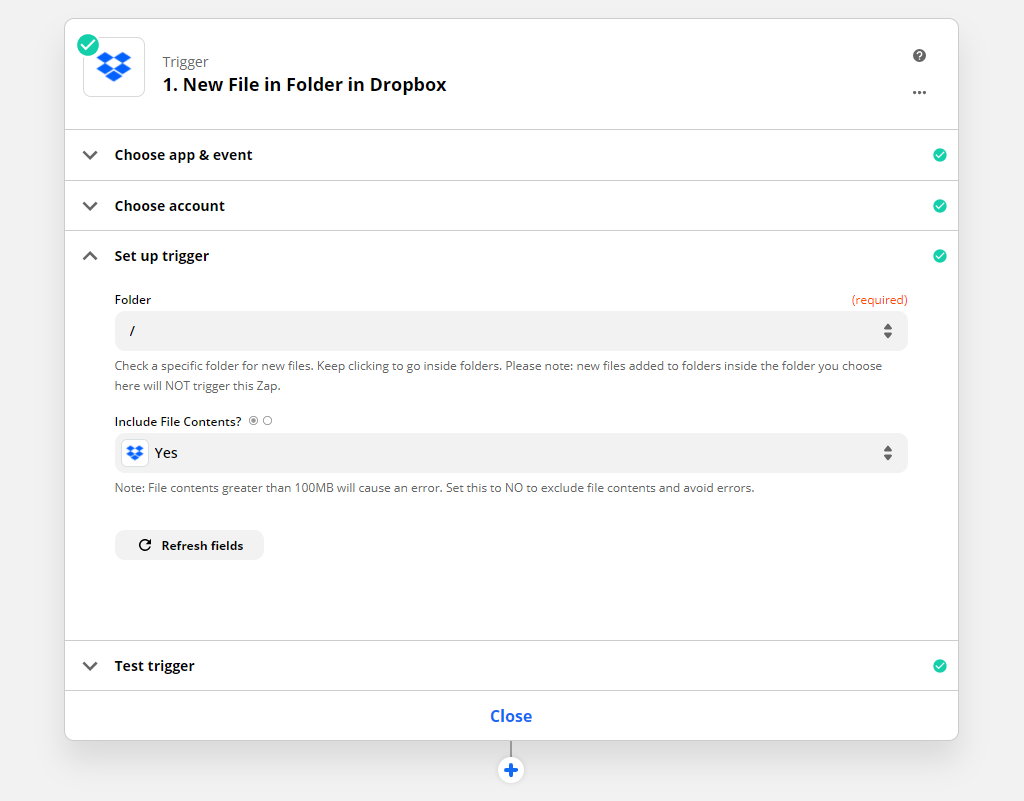
Step 2- “Action at Zap”. In this step, we define the action to be performed on the file when an event is triggered. From the list of apps, select PDF4me that would assist us in converting the File to PDF.
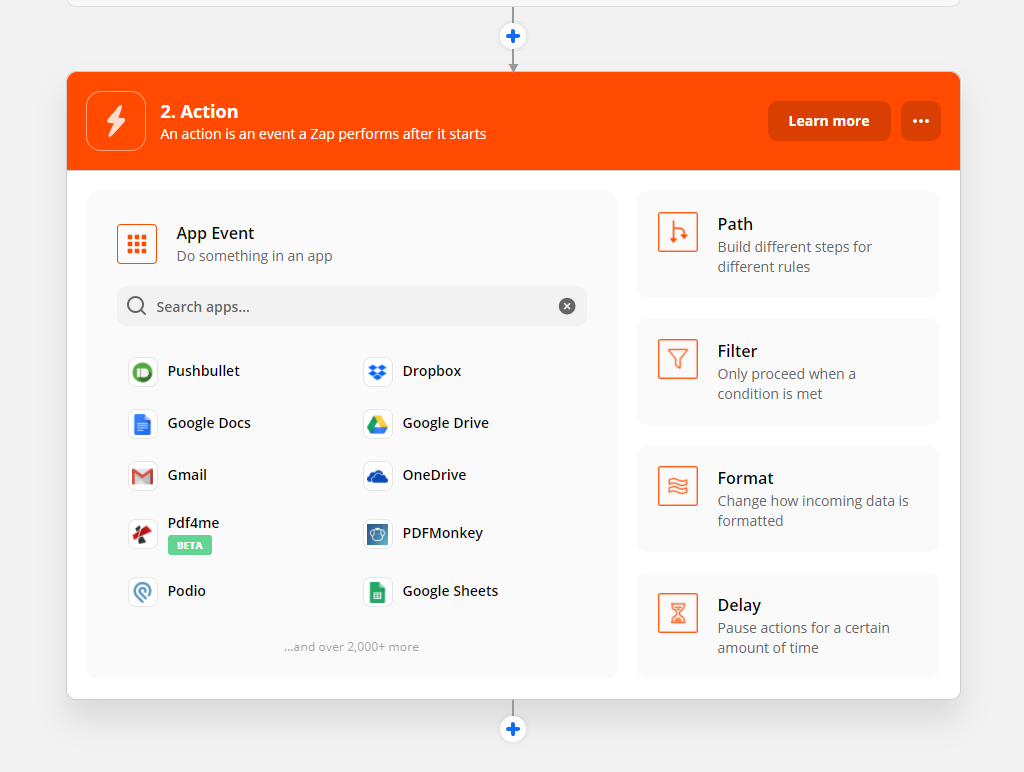

We proceed further connecting to our PDF4me account.

Provide relevant information from the response of step1, as input. Furnish the details like File name (Extension to be included) and File property from Dropbox, as input data for PDF4me. It’s important to provide the file name with an extension, as it determines the type of conversion.

Now we are set to validate the result of this conversion, based on the action setting. If the response is as expected, let us proceed further to the final step.
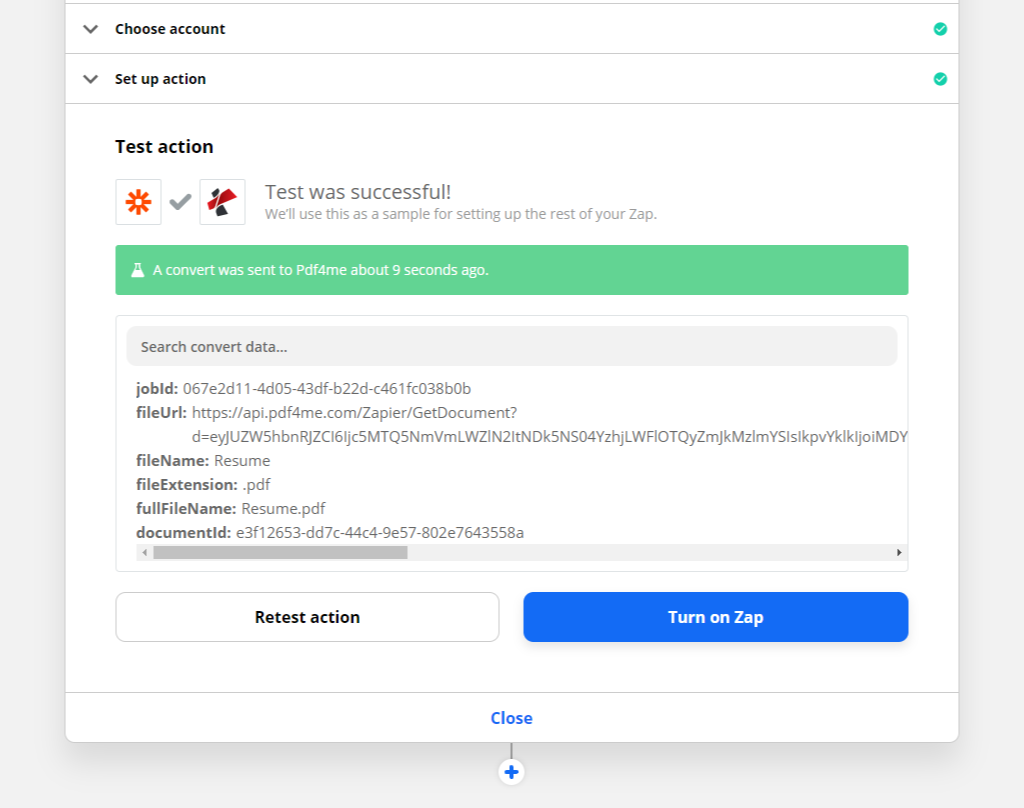
Step 3- “Save from Zap”. Now since we have the converted file in the zap, it needs to be saved in a secure destination, an application of choice. In our scenario, we select Google Drive from the list of apps and perform the “Upload File” action. We then select the destination folder and upload the converted file (you can use the “File URL” property in the PDF4me app, to choose the path of the destination folder), which can also be used in emails, or as posts in various media applications.
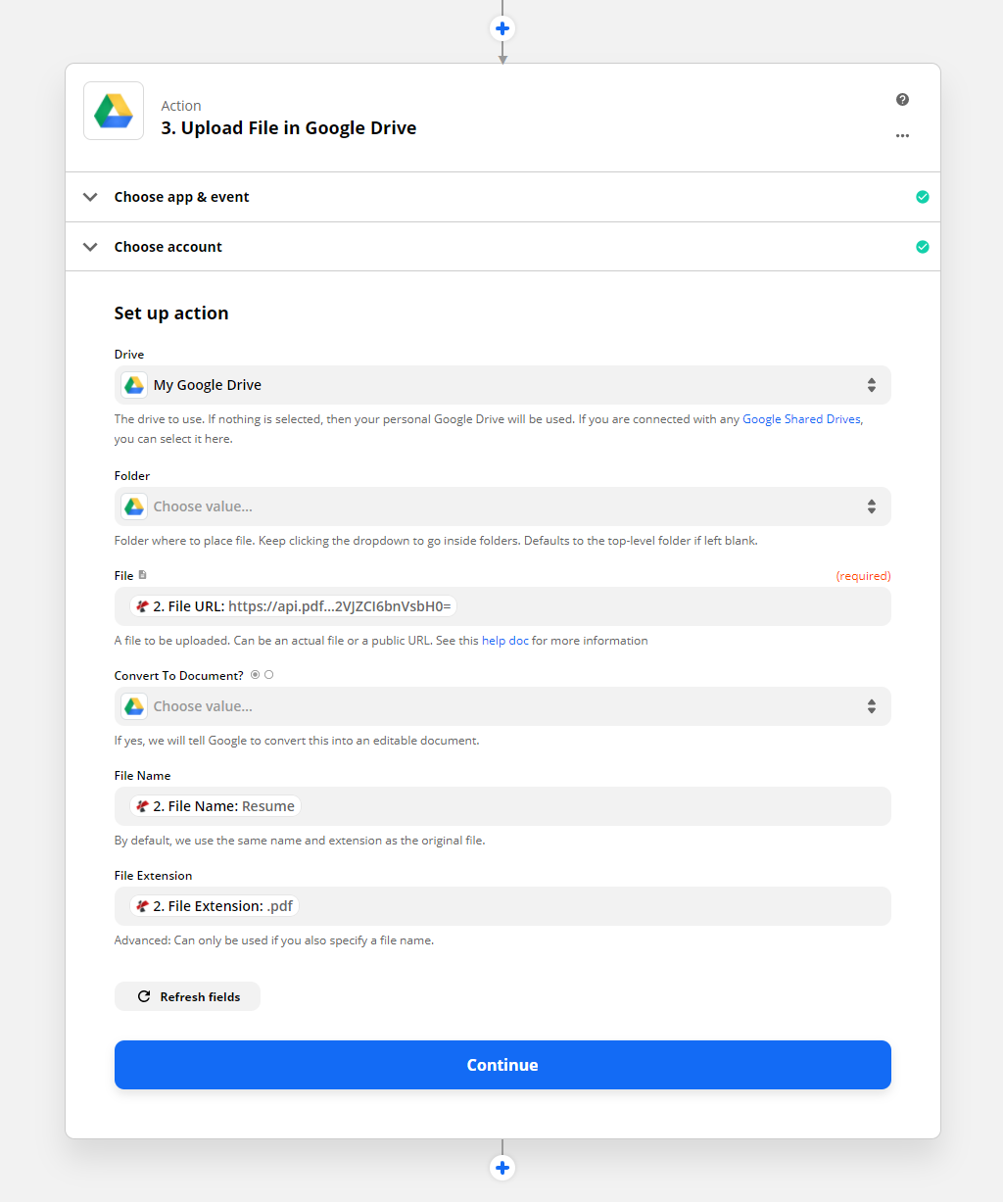
Now, we are all set to ‘turn on’ the Zap…😊 to use.
